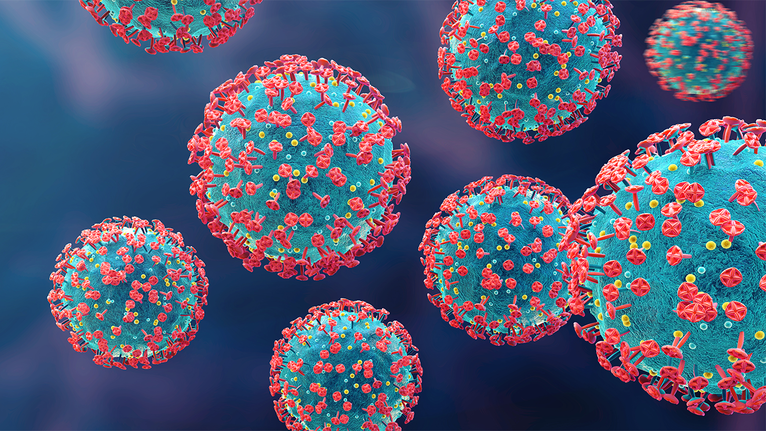UNDERSTANDING VARIANT CLASSIFICATIONS
Scientists continue to monitor both existing and new strains of COVID-19, categorizing each one into a variant class. The variant class helps determine the best way to fight the virus, including vaccines, treatments and diagnostics.
Variants Being Monitored
A variant being monitored (VBM) is one that is no longer detected or is circulating only at very low levels in the U.S and no longer poses a significant threat to the American population. The CDC continues to monitor these variants to keep watch for a potential uptick. If such a shift is detected, the variant would be re-classified to a variant of interest (VOI) or variant of concern (VOC).
Think of VBMs hurricanes that have drifted offshore—meteorologists will watch them in case they re-form and come back to threaten land, but most of them continue out to sea. Current VBM variants include Alpha, Beta, Gamma, Delta, Epsilon, Eta, Iota, Kappa, Zeta and Mu.
Variants of Interest
A variant of interest (VOI) is defined as a strain that meets both the following criteria:
- It has genetic changes that could affect how contagious it is, how sick it makes people or how well vaccines work against it.
- It has led to increased community spread or caused clusters in multiple countries—more people are getting sick in more places.
Currently, there are no variants classified as a VOI.
Variants of Concern
A strain is upgraded to a variant of concern (VOC) if it meets the criteria for a VOI, plus at least one of the following:
- It is more contagious.
- It causes more severe disease.
- Public health measures such as vaccines, tests and treatments are not as effective.
Omicron is currently the only variant the WHO classifies as a VOC. Past VOC variants include Alpha, Beta, Gamma and Delta.
Variants of High Consequence
In addition to meeting the definition of a variant of concern, a variant of high concern (VOHC) is defined by the following:
- It isn’t detected well enough by tests or doesn’t meet testing targets.
- There is a significant reduction in vaccine effectiveness, an unexpectedly high percentage of vaccinated people have been infected or vaccines don’t protect well against severe disease.
- Treatments are significantly less effective relative to previously circulating variants.
- It causes more severe disease and increased hospitalization.
No COVID-19 variants are currently designated variants of high consequence.
De-escalated Variants
Variants can also be de-escalated or downgraded from a previous status. The CDC does this when the variant no longer meets criteria for a VOI, VOC or VOHC.
Here are the reasons the new forms of SARS-CoV-2 have been downgraded:
- The[KE2] new form is no longer spreading.
- It has been spreading for a long time without affecting the overall health situation.
- Scientific evidence demonstrates that it doesn't have any concerning properties.
Currently, Delta is the only COVID-19 variant that has been downgraded from a VOC to a VBM. This means that the available data does not indicate that Delta meets the criteria for a VOI, VOC or VOHC, and is not a public health concern.
The Bottom Line?
“As always, it’s critical to stay up-to-date on your vaccines so you stay ahead of the virus,” Dr. Forrester said. “Any immunity is better than no immunity, and data clearly shows that vaccinated and boosted people are much less likely to develop severe illness or need hospital care.”
